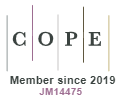Analitic Autoethnography in Research on Social Aspects of Disease Experience
DOI:
https://doi.org/10.18778/1733-8069.10.3.09Keywords:
autoethnography, embodiment, illness, pain, sociology of illness, sociology of the bodyAbstract
The article presents issues related to the phenomenon of social conditions of experiencing illness, disability, and pain. It will be presented from the perspective of sociologists, anthropologists, educators, and representatives of medical science. The article presents autoethnographical method, pointing out differences between its two kinds: analytical and evocative. In the text, I focus mainly on research practice, guidelines, and concerns regarding methods or techniques of research. In this article, I present two autoethnographic studies by the authors who have experienced serious, life-threatening disease. On this ground, I will present the most important features of autoethnographic study, such as: theoretical and methodological discipline, insights into one’s own experience, experiences, honesty, and openness. I also refer to distinction between autoethnography as a technique and method of social research. In the last part of the text, I present some of the issues pertinent to my own autoethnographic study and point out advantages and risks, as well as some practical tips related to the use of autoethnography.
Downloads
References
Anderson Leon (2006) Analytic Autoethnography. „Journal of Contemporary Ethnography”, vol. 35, no. 4, s. 373–395.
Google Scholar
DOI: https://doi.org/10.1177/0891241605280449
Audi Robert, ed., (1999) The Cambridge Dictionary of Philosophy, 2nd ed. Cambridge: Cambridge University Press.
Google Scholar
Blumer Herbert (2007) Interakcjonizm symboliczny. Przełożyła Grażyna Woroniecka. Kraków: Zakład Wydawniczy Nomos.
Google Scholar
Byczkowska Dominika (2009) What Do We Study Studying Body? Researcher’s Attempts to Embodiment Research. „Qualitative Sociology Review”, vol. 5, no. 3, s. 100–112 [dostęp 6 czerwca 2014 r.]. Dostępny w Internecie http://www.qualitativesociologyreview.org/ENG/archive_eng.php
Google Scholar
DOI: https://doi.org/10.18778/1733-8077.5.3.07
Charlton Edmond, ed., (2005) Core Curriculum for Professional Education in Pain. Seattle: IASP Press.
Google Scholar
Charmaz Kathy (2006) Constructing Grounded Theory. A Practical Guide Through Qualitative Analysis. London, New Delhi: Sage.
Google Scholar
Charmaz Kathy (2009) Teoria ugruntowana. Praktyczny przewodnik po analizie jakościowej. Przełożyła Barbara Komorowska. Warszawa: Wydawnictwo Naukowe PWN.
Google Scholar
Charon Rita (2006) Narrative Medicine: Honoring the Stories of Illness. Oxford: Oxford University Press.
Google Scholar
Del-Vecchio Good Mary-Jo i in., eds., (1994) Pain as Human Experience. An Anthropological Perspective. Berkeley, Los Angeles: University of California Press.
Google Scholar
Ellis Carolyn S., Bochner Arthur P. (2006) Analyzing Analytic Autoethnography: An Autopsy. „Journal of Contemporary Ethnography”, vol. 35, no. 4, s. 429–449.
Google Scholar
DOI: https://doi.org/10.1177/0891241606286979
Frank Arthur (1991) The Wounded Storyteller: Body, Illness, and Ethics. Chicago: University of Chicago Press.
Google Scholar
Hałas Elżbieta (2006) Interakcjonizm symboliczny. Warszawa: Wydawnictwo Naukowe PWN.
Google Scholar
Hammersley Martyn, Atkinson Paul (2000) Metody badań terenowych. Przełożył Sławomir Dymczyk. Poznań: Zysk i S-ka.
Google Scholar
Hoffmann-Riem Christa (1994) Losing a Symbolically Significant Part of the Body [w:] Hoffmann-Riem Wolfgang, Pieper Marianne, Riemann Gerhard, Hrsg., Elementare Phänomene der Lebenssituation. Weinheim: Deutscher Studien Verlag, s. 352–363.
Google Scholar
Kleinmann Arthur (1988) The Illness Narratives: Suffering, Healing and the Human Condition. New York: Basic Books.
Google Scholar
Konecki Krzysztof (2000) Studia z metodologii badań jakościowych: teoria ugruntowana. Warszawa: Wydawnictwo Naukowe PWN.
Google Scholar
Kotarba Joseph (1983) Chronic Pain: Its Social Dimensions. Beverly Hills: Sage.
Google Scholar
Lussier-Ley Chantale (2010) Dialoguing With the Body: A Self Study in Relational Pedagogy Through Embodiment and the Therapeutic Relationship. „The Qualitative Report”, vol. 15, no. 1, s. 197–214.
Google Scholar
Merleau-Ponty Maurice (2001) Fenomenologia percepcji. Przełożyli Małgorzata Kowalska i Jacek Migasiński. Warszawa: Fundacja Aletheia.
Google Scholar
Ohnuki-Tierney Emiko (1981) Illness and Healing Among Sakhalin Ainu. Cambridge: Cambridge University Press.
Google Scholar
Plummer Ken (2012) My Multiple Sick Bodies: Symbolic Interactionism, Autoethnography and Embodiment [w:] Turner Bryan S., ed., Routledge Handbook of Body Studies. New York: Routhledge, s. 75–93.
Google Scholar
Priel Beatrice, Rabinowitz Betty, Pels Richard (1991) A Semiotic Perspective on Chronic Pain: Implications for the Interaction Between Patient and Physician. „British Journal of Medical Psychology”, vol. 64, s. 65–71.
Google Scholar
DOI: https://doi.org/10.1111/j.2044-8341.1991.tb01643.x
Rambo-Ronai Carolyn (1992) Managing Aging in Young Adulthood. The Aging Table Dancer. „Journal of Aging Studies”, vol. 6, no. 4, s. 307–317.
Google Scholar
DOI: https://doi.org/10.1016/0890-4065(92)90014-W
Strauss Anselm, Corbin Juliet (1990) Basics of Qualitative Research. Grounded Theory Procedures and Techniques. Newbury Park, London, New Delhi: Sage Publications.
Google Scholar
Turner Bryan, Wainwright Steven (2003) Corps de Ballet: The Case of Injured Ballet Dancer. „Sociology of Health and Illness”, vol. 25, no. 4, s. 269–288.
Google Scholar
DOI: https://doi.org/10.1111/1467-9566.00347
Waskul Dennis, van der Riet Pamela (2002) An Abject Embodiment of Cancer Patient: Dignity, Selfhoodand the Grotesque Body. „Symbolic Interaction”, vol. 25, no. 4, s. 487–513.
Google Scholar
DOI: https://doi.org/10.1525/si.2002.25.4.487
Weissman David, Gordon Deborah, Bidar-Sielaff Shiva (2002) Cultural Aspects of Pain Management. End-of-Life Physician Education Resource Center [w:] Fast Facts and Concepts. Milwaukee: Medical Collage of Wisconsin, [dostęp DD miesiąc RRRR r.]. Dostępny w Internecie http://www.mywhatever.com/cifwriter/library/eperc/fastfact/ff78.html
Google Scholar
Williams Gareth H. (1984) The Genesis of Chronic Illness: Narrative Reconstruction. „Sociology of Health and Illness” vol. 6, s. 175–200.
Google Scholar
DOI: https://doi.org/10.1111/1467-9566.ep10778250
Ziółkowski Marek (1981) Znaczenie, interakcja, rozumienie. Warszawa: PWN.
Google Scholar
Downloads
Published
How to Cite
Issue
Section
License

This work is licensed under a Creative Commons Attribution-NonCommercial-NoDerivatives 4.0 International License.














